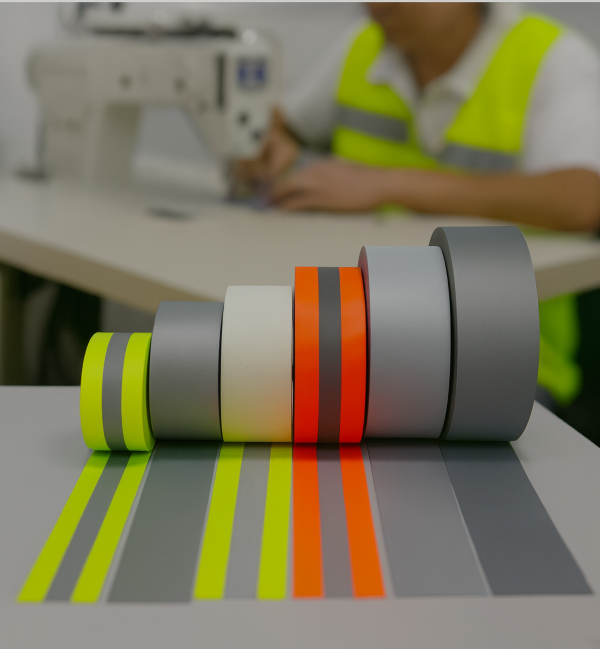Applications and Importance of Sew-On Reflective Strips
In daily life and work environments, safety and visibility are inseparable issues. Especially at night, on rainy days, or in low-light conditions, reflective designs can effectively reduce the risk of accidents. Among them, the sew-on reflective strip is a common and efficient safety material widely used in various clothing, accessories, and equipment — practical and durable.
What is a Sew-On Reflective Strip?
A sew-on reflective strip is a reflective material designed specifically for garments or textile products, typically made of polyester fibers combined with glass microbeads or microprism reflective layers. Its features include:
-
High Reflectivity: Reflects light back toward its source, improving the visibility of the object.
-
Excellent Durability: Can withstand multiple washes and long-term use, making it suitable for everyday wear and outdoor environments.
-
Process Flexibility: Can be sewn directly onto various fabrics, with flexible placement options.
Main Application Areas of Sew-On Reflective Strips
1. Safety and Protective Clothing
In high-risk jobs such as construction, road maintenance, and fire rescue, reflective strips are standard features of workwear.
-
Construction vests and jackets: Sewn on the chest, shoulders, and waist to allow workers to be quickly identified in dark or dim environments.
-
Firefighting and rescue suits: Combined with heat-resistant and flame-retardant materials to ensure high visibility even in dangerous conditions.
2. Sports and Leisure Apparel
Night running, cycling, hiking, and other activities require safety protection.
-
Sports jackets and pants: Reflective strips sewn on cuffs, leg sides, or the back ensure visibility when illuminated by vehicle headlights or flashlights.
-
Marathon bibs and sports vests: Added reflective details to enhance nighttime safety for participants.
3. Everyday and Student Items
Many schools sew reflective strips on students’ uniforms, school bags, or raincoats to ensure their safety when traveling to and from school.
-
Raincoats: Reflective strips sewn along the hood, cuffs, or back to prevent accidents caused by poor visibility in the rain.
-
Backpacks and straps: Improve visibility while walking at night.
4. Special Purpose Equipment
-
Baby strollers and wheelchair covers: Reflective strips sewn along the frame allow drivers to spot them from a distance.
-
Motorcycle and bicycle protective gear: Reflective strips on knee pads, wrist guards, and jackets enhance road safety.
Although a sew-on reflective strip is just a small piece of fabric, it plays a critical role between danger and safety. As safety awareness grows, its applications will become even more widespread — from professional protection to everyday life — providing visible protection for every user.



